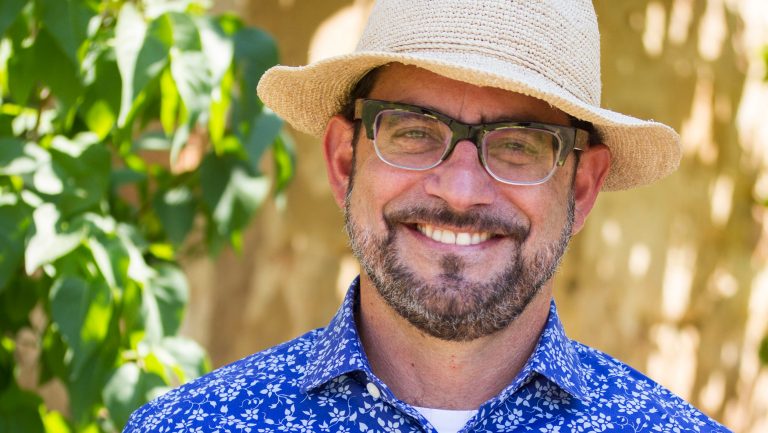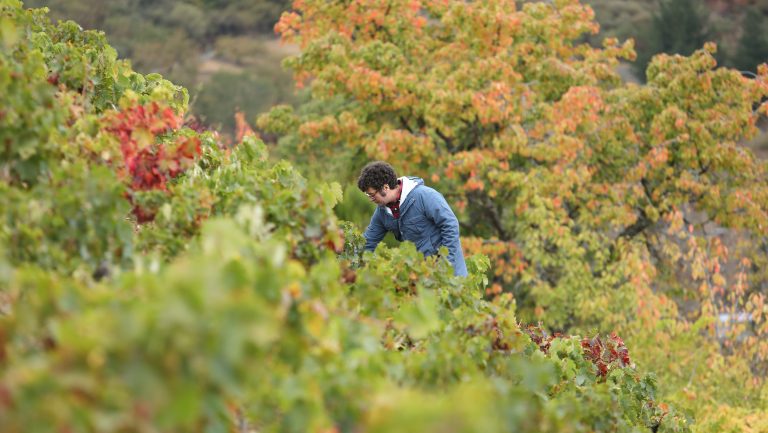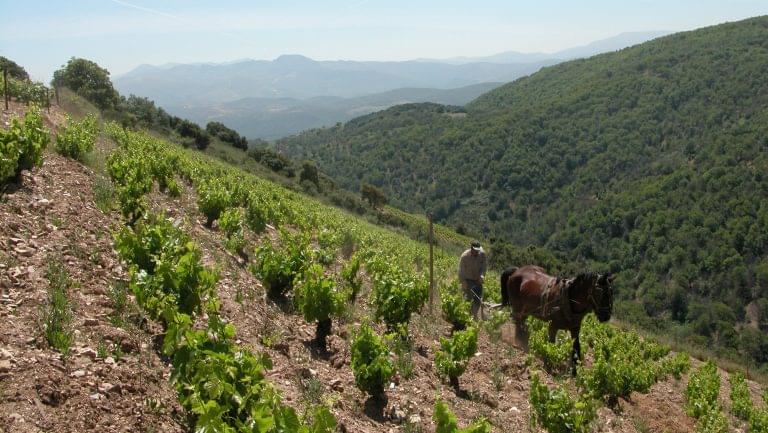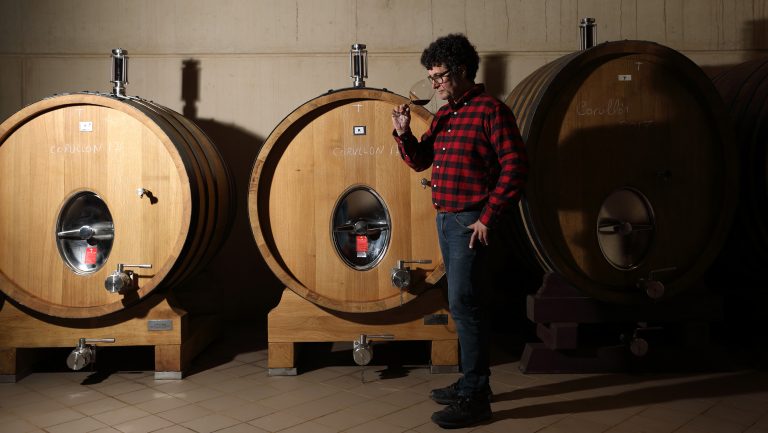La Faraona, a single-vineyard wine produced by Descendientes de J. Palacios from 80-year-old Mencía vines set on precipitously steep vineyards in Bierzo, in the northwest of Spain, easily sells for $650 per bottle. The winery’s dynamic owner and winemaker, Ricardo Pérez Palacios, arguably would not seem to need much help from the regional wine board in selling such sought-after wine. But in 2014, Pérez Palacios joined the technical committee of the Bierzo wine board anyway, with the explicit goal of helping to codify a hierarchy of the region’s vineyards. Three years later, the hierarchy was accepted, and Bierzo was arranged into a classification of regional wines, village wines, premier crus, and grand crus, pending review and approval.
If that sounds like a page out of the Burgundy playbook, that’s because it is. In recent years, top wineries from across Spain—and around the world—have focused intensely on vineyards, using techniques like soil testing, drone photography, and scouring ancient land records and historical documents to find site references. But one attractive aspect of Burgundy that has remained elusive is the hierarchical classification of vineyards. With so much at stake in the bestowal of terms like grand cru, vineyard owners excluded from a top spot in the hierarchy have reason to fight, creating challenges for those who seek to make the classifications legal.
Whether producers choose to cut ties with legal denominations of origin altogether, or like Pérez Palacios, fight to integrate classifications into the regional framework, recent developments in Spain show both the opportunities for hierarchical classification schemes and the challenges inherent in enacting them.

Don’t miss the latest drinks industry news and insights. Sign up for our award-winning newsletters and get insider intel, resources, and trends delivered to your inbox every week.
The Value of Secession
Signs of strain on Spain’s denomination of origin system have been well documented. In 2012, Raventós i Blanc in Sant Sadurní d’Anoia left the 31,000-hectare Cava DO, and in 2015, Bodegas y Viñedos Artadi in Laguardia quit the 65,000-hectare Rioja DOCa—both cited a lack of recognition of their terroir as a primary grievance. Both wineries felt that their names carried more weight than the denominations themselves. “Nobody bought Raventós because it had Cava on the label,” says Andrew Mulligan, a portfolio manager at Skurnik Wines in New York City, which imports both producers. “They bought it because it had Raventós i Blanc on the label. Same goes for Artadi.” The two wineries, according to Mulligan, have seen their U.S. sales increase in the years since they left the denominations, a fact that he doesn’t directly attribute to their departures.
Just weeks after Artadi announced its intention to leave the Rioja DOCa, in late 2015, Telmo Rodríguez—who makes wines from around Spain under his namesake label and for Remelluri, his family’s property in Bastida in Rioja—hosted a conference at Club Matador in Madrid to discuss the great vineyards of Spain. Spurred by recent events and buoyed by the event’s wide-ranging discussion, a manifesto was created that called for Spain to adopt a hierarchical classification of all vineyards—in the style of Burgundy. By working within the legal systems rather than quitting them, the idea, as stated in the manifesto, was to burnish the country’s image and establish conditions such that “all producers would come out winners.” Signatures from more than 150 people in the wine industry—including such prominent figures as the British wine writer and judge Tim Atkin, MW, and the Madrid-based wine critic Luis Gutiérrez—demonstrated enthusiastic support.
Working within the system isn’t easy, however. Rioja, for example, spills into three administrative regions, and the Basque portion—Rioja Alavesa—is increasingly restive, leading to further demands on the Consejo Regulador, the wine region’s governing body. “Rioja is a big appellation with many different players in terms of size, strategies, and market approaches,” says Amaya Cervera, the Madrid-based editor of SpanishWineLover.com. “It is really difficult to find a consensus with such competing interests.”

The controversy may be spurring Rioja in the right direction. “People leaving the DOs is good because it creates anxiousness,” says André Tamers, the founder of De Maison Selections in Chapel Hill, North Carolina, which imports Remelluri. “Obviously, we need the DOs because otherwise there would be no rules. But the DOs have to get with the times.” Facing pressure to release the region’s terroirs on labels, the Consejo Regulador announced new regulations in 2017 that allow producers to list single-vineyard designations alongside the more traditional aging designations of crianza, reserva, and gran reserva. Growers like Telmo Rodríguez are now allowed to put both a vineyard name and the word Rioja on labels.
The new rules are far from perfect, though. Making matters impractical, the regulations require there to be a winemaking facility in each village that appears on the label. “They did that,” says Tamers, “because they want to obliterate the ideas of places and protect the idea of Rioja as a brand, which protects the identity of multinationals. Small producers continue to be punished.”
Legislative Success
Bierzo is one of the country’s oldest wine-growing regions and one of the least well known—until recently. Thanks to the efforts of producers of vineyard-designated wines like the Palacios family—Pérez Palacios and his uncle, Alvaro Palacios—and Raúl Pérez, Bierzo is now on the map. Though the vineyard classification for Bierzo was announced in 2017, labeling for village wines will start with the 2018 vintage, pending final approval, and the goal is to designate premier crus and grand crus after a 5- to 10-year phase-in and approval period.
But why did Pérez Palacios want to pursue the official route, through the DO, as opposed to seceding and relying on name recognition? “It’s trendy right now to leave the DO and it is free publicity,” says Pérez Palacios, “but we prefer to work within the system. It’s important that the consumer knows somebody is controlling this. If not, someone could bring in grapes from somewhere else. Private certification is not as strict as government certification.” Regulations, he adds, are also more permanent.

Pérez Palacios calls the Bierzo system a “very democratic classification” because it will permit a winemaker to buy grapes from a specific vineyard and then make a classified wine. “This helps the growers and the region,” he says, “by increasing the price of grapes, increasing the price of wine, and increasing the price of land.”
Eric Solomon, who is the founder of importer European Cellars in Charlotte, North Carolina, and the husband of Daphne Glorian, the proprietor of Clos Erasmus in the Priorat region, draws comparisons between Bierzo and Priorat, which is currently debating a similar vineyard classification. “Both regions are fairly young DOs with long traditions of winemaking but with little identity at their beginning,” he says. “They were largely blank slates, so risk taking wasn’t economically unreasonable.” He cites the leadership and success of Pérez Palacios and Raúl Pérez as key factors in rallying local growers to cooperate and move toward classification.
Lessons for Other Regions
Other regions are also agitating for change. Earlier this year, a group of top producers from Penedès effectively seceded and created a private association, called Corpinnat—with a separate sparkling wine designation from the area most known for Cava. In Jerez, after complaints from younger growers, the regulatory council is allowing nonfortified wines in the DO for the first time, an outcome that Tamers says “has everything to do with terroir,” since terroir will be more detectable in the glass without fortification.
Whether other Spanish wine regions—or regions in the greater wine world—are able to implement formal hierarchical classifications remains to be seen. In the high sierra outside Madrid, the wines of Comando G have attracted international attention—one was even dubbed Rozas 1er Cru as a cheeky nod toward Burgundy. But Pérez Palacios says that this region, Gredos, lies at the confluence of three administrative regions, a situation likely to slow the establishing of any formal hierarchy of sites there; Bierzo lies wholly in one region—Castilla y León—which Pérez Palacios says has helped speed the new regulations.

Bierzo’s particular circumstances—powerhouse quality producers in a relatively new and compact DO with supportive regulatory structures—may not be easy to replicate elsewhere. “The big issue is that producers need to increase prices and reverse the image of Spain as a source of cheap wines,” says Cervera. “And classifications can help to communicate the uniqueness [of] their wines. But they can also generate confusion.”
Trouble could still lie ahead as Bierzo moves to finalize its higher levels of vineyard classifications. Battles in other areas of the wine world illustrate how difficult it can be to redraw maps and hierarchies. Producers in Barolo, Italy, which does not have a formal classification system, were embroiled in a protracted legal battle that culminated in a 2013 Italian high court decision to allow the enlargement of the renowned Cannubi vineyard from 15 to 34 hectares. The 2006 reclassification of Saint-Émilion châteaus was legally challenged by demoted vintners and has essentially been under assault ever since.
Despite the challenges of changing regulations, producers and wine professionals alike feel there is reason to demand that more attention is paid to Spain’s great vineyards. “If the councils don’t adjust to what consumers see as quality,” says Tamers, “then they are failing their role.”

Dispatch
Sign up for our award-winning newsletter
Don’t miss the latest drinks industry news and insights—delivered to your inbox every week.
Tyler Colman writes, talks, and teaches about wine. He is the author of two wine books, Wine Politics and A Year of Wine. He also writes the wine blog DrVino.com, which was nominated for a James Beard Award. Colman is a real doctor—he doesn’t just play one on the web. He holds a Ph.D. from Northwestern University and has taught wine classes at New York University, the New School, and the University of Chicago. His wine writing has appeared in the New York Times and the World of Fine Wine, among other media.






